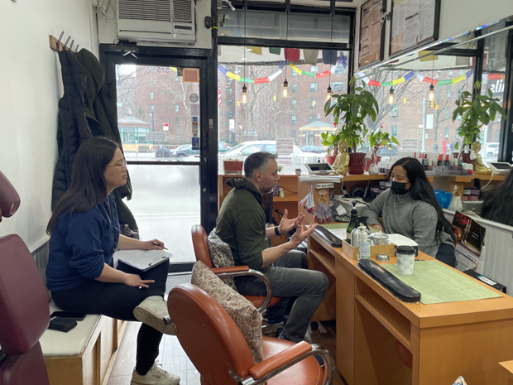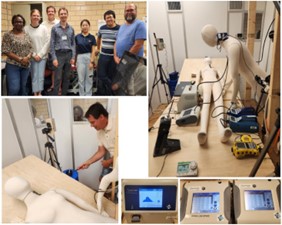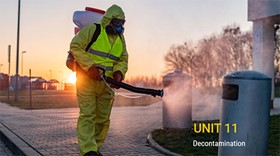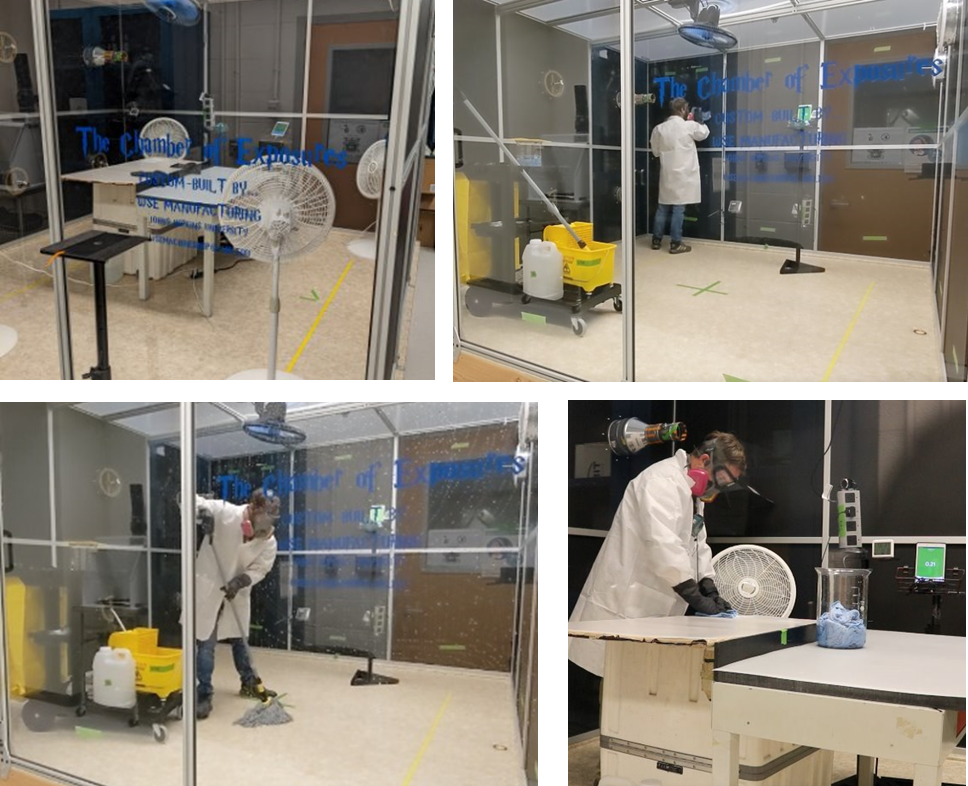Superfund Research Program
June 2024
By Isaac Conrad
New approaches to address the occupational health and safety risks found in various workplaces were the focus of a Superfund Research Program (SRP) Progress in Research webinar series.
During the three-part series, held in April and May, seven SRP grant recipients, along with representatives from the NIEHS Worker Training Program (WTP) and the National Institute for Occupational Safety & Health (NIOSH), presented research, curricula, and tools designed to better prepare workers to do their jobs safely.
“Protecting human health from harmful exposures is paramount to the success of SRP,” said SRP Director Michelle Heacock, Ph.D. “By educating others on occupational exposures, SRP grant recipients and collaborators continually improve the training and safety of researchers and workers.”
Emerging Technologies Advance Worker Safety

- Brian Pavilonis, Ph.D., of the New York Training Center for Emerging Technologies in Industrial Hygiene at the City University of New York, kicked off the series, highlighting the program’s work using low-cost sensors to monitor volatile organic compounds (VOCs) in New York City nail salons. The team partnered with community-based organizations to measure workers’ baseline exposures to VOCs, inspect nail salon ventilation systems, and evaluate strategies to reduce exposure.
- Cesar Bandera, Ph.D., of Cell Podium, presented an effort to improve disaster response training using augmented reality technologies. Funded by a WTP Small Business Innovation Research grant, his team created a simulated hazardous waste release scenario, without the need to use real contaminants that may harm trainees’ health. Their approach uses small chips placed throughout training grounds — to represent hazards — and an app that senses the chips via Bluetooth and gives trainees more information about the contaminants.
- Ellen Wells, Ph.D., of the Distance Education and Training on Emerging Contaminants program, presented on a collaboration between Purdue University, University of Toledo, and University of South Florida to turn in-person training and labs into virtual reality experiences. Their courses focus on identifying and characterizing emerging contaminants, including nanoparticles, PFAS, and harmful algal blooms.
Working Across Institutions

- Stuart Batterman, Ph.D., and Kermit Davis, Ph.D., introduced the Michigan-Ohio Occupational Research Education (MOORE) program. A multidisciplinary collaboration between the University of Cincinnati, University of Michigan, and Michigan State University, MOORE created free, online trainings for school and healthcare workers to assess their exposure to aerosols and other contaminants in workplace settings.
- Rachel Jones, Ph.D., presenting on behalf of principal investigator Susan Arnold, Ph.D., discussed collaborative efforts by researchers from the University of Minnesota; the University of Iowa; and University of California, Los Angeles (UCLA), to design industrial hygiene courses focused on anticipating and preventing hazards from emerging technologies. The courses cover topics such as additive manufacturing, nanomaterials, and novel drug delivery. Their work is part of the Interdisciplinary Training, Education and Research Activities for Assessing and Controlling Contaminants from Emerging Technologies (InTERACCT) Program.
- Elizabeth Maples, Ph.D., from NIOSH, introduced the agency’s Education and Research Centers (ERC) program, which funds academic institutions across the U.S. to provide health and safety and continuing education to students in occupational health. ERC program graduates work in a variety of fields, including industrial hygiene, disaster response, nursing, and occupational psychology.

- Darrah Sleeth, Ph.D., and Rod Handy, Ph.D., discussed the Biological Hazard Site Training in Emerging Technologies (BioSTET) for Health and Safety program, which brings together researchers and students from seven institutions — the University of Utah; East Tennessee State University; Texas A&M University; California Polytechnic State University, San Luis Obispo; Weber State University in Utah; UCLA; and Montana Technical University. BioSTET has developed 11 different courses focused on biological and infectious agent health and safety in the context of environmental characterization and cleanup.
Engaging Students in Research

- Gurumurthy Ramachandran, Ph.D., presented about the Program on Occupational Health and Safety Education on Emerging Technologies – Mid Atlantic Partnership (POccETMAP), involving Johns Hopkins University, University of Maryland, George Mason University, and Old Dominion University. He discussed student-assisted research projects in which students gain experience in research design and data analysis. Project topics range from developing technologies to remove PFAS from groundwater to investigating methods to reduce worker exposure to a disinfection chemical used in healthcare facilities.
- Candace Tsai, Ph.D., of the Occupational and Environmental Exposures and Work Practices for Nanomaterials and Electronic Products program, highlighted a student-led project focused on improving electronic recycling, which can expose workers to hazardous plastic, chemical, and metal wastes. The team found that cryogenic milling, a new method that grinds up electronic waste into nano-sized particles in a closed system, reduced worker’s exposure to harmful elements in electronic waste. Tsai’s program is a collaboration between UCLA; University of California, Irvine; and California State University, Fullerton. The program’s students, more than 50% of whom come from populations typically underrepresented in occupational health and science, learn multidisciplinary approaches to understand the health effects of nanomaterials and electronic products while designing their own research projects.
Read more about the Progress in Research series in the SRP June Science Digest. To view recordings and downloadable presentation slides from the sessions, please visit the SRP Progress in Research website. For more information about SRP Occupational Health and Safety Training Education Programs on Emerging Technologies (R25) grants, please contact Danielle Carlin, Ph.D., an SRP health scientist administrator and the R25 program lead.


